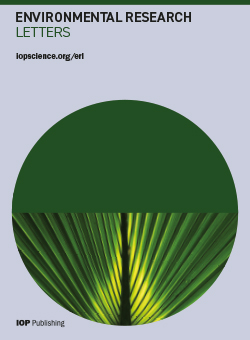Significant influence of winter Pacific-North American pattern on spring vegetation in mid-high latitude Asia
IF 5.6
2区 环境科学与生态学
Q1 ENVIRONMENTAL SCIENCES
引用次数: 0
Abstract
Given that the vegetation over mid-high latitude Asia (MHA) has been more variable in recent years, it is necessary to better understand the physical causes of vegetation variations in this region. Based on the normalized difference vegetation index (NDVI), this study reveals a close linkage of the variability of spring (April–May) vegetation in MHA to the winter (December–January–February) Pacific-North American (PNA) pattern. When the winter PNA pattern lies in the positive phase, the NDVI tends to decrease in most parts of the MHA region during the following spring. Further analysis suggests that the lagged influence of winter PNA on spring atmospheric circulations and hence the vegetation in MHA is accomplished by the stratospheric pathway. The positive PNA phase can enhance the upward transport of wave energy into the stratosphere over the high latitudes in winter through the linear constructive interference of zonal wavenumber 1 (WN1), consequently leading to a weaker polar vortex in the stratosphere during February-March. Subsequently, the weakened polar vortex signal propagates downward from the stratosphere to the troposphere, inducing the negative Arctic Oscillation-like circulation with an anomalous cyclonic circulation dominating the MHA region in spring. The anomalous cyclonic circulation further cools the surface air temperature in MHA via modulating downward solar radiation and temperature advection, resulting in a decrease of spring NDVI in situ.冬季太平洋-北美模式对亚洲中高纬度地区春季植被的显著影响
鉴于近年来亚洲中高纬度地区(MHA)的植被变化较大,有必要更好地了解该地区植被变化的物理原因。基于归一化差异植被指数(NDVI),本研究揭示了亚洲中高纬度地区春季(4 月-5 月)植被变化与冬季(12 月-1 月-2 月)太平洋-北美(PNA)模式的密切联系。当冬季太平洋-北美模式处于正相位时,MHA 地区大部分地区的归一化差异植被指数在次年春季趋于下降。进一步分析表明,冬季 PNA 对春季大气环流的滞后影响,进而对 MHA 地区植被的影响,是由平流层路径完成的。正的 PNA 相位可以通过带状波数 1(WN1)的线性建设性干扰,增强冬季高纬度地区平流层波能的向上输送,从而导致 2-3 月间平流层极地涡旋的减弱。随后,减弱的极地涡旋信号从平流层向下传播到对流层,诱发了类似北极涛动的负环流,并在春季主导了 MHA 地区的异常气旋环流。异常气旋环流通过调节向下的太阳辐射和温度平流,进一步降低了 MHA 地区的地表气温,导致当地春季 NDVI 下降。
本文章由计算机程序翻译,如有差异,请以英文原文为准。
求助全文
约1分钟内获得全文
求助全文
来源期刊

Environmental Research Letters
环境科学-环境科学
CiteScore
11.90
自引率
4.50%
发文量
763
审稿时长
4.3 months
期刊介绍:
Environmental Research Letters (ERL) is a high-impact, open-access journal intended to be the meeting place of the research and policy communities concerned with environmental change and management.
The journal''s coverage reflects the increasingly interdisciplinary nature of environmental science, recognizing the wide-ranging contributions to the development of methods, tools and evaluation strategies relevant to the field. Submissions from across all components of the Earth system, i.e. land, atmosphere, cryosphere, biosphere and hydrosphere, and exchanges between these components are welcome.
 求助内容:
求助内容: 应助结果提醒方式:
应助结果提醒方式:


